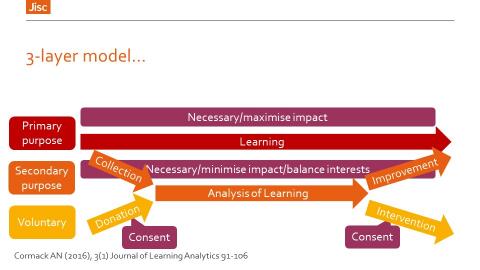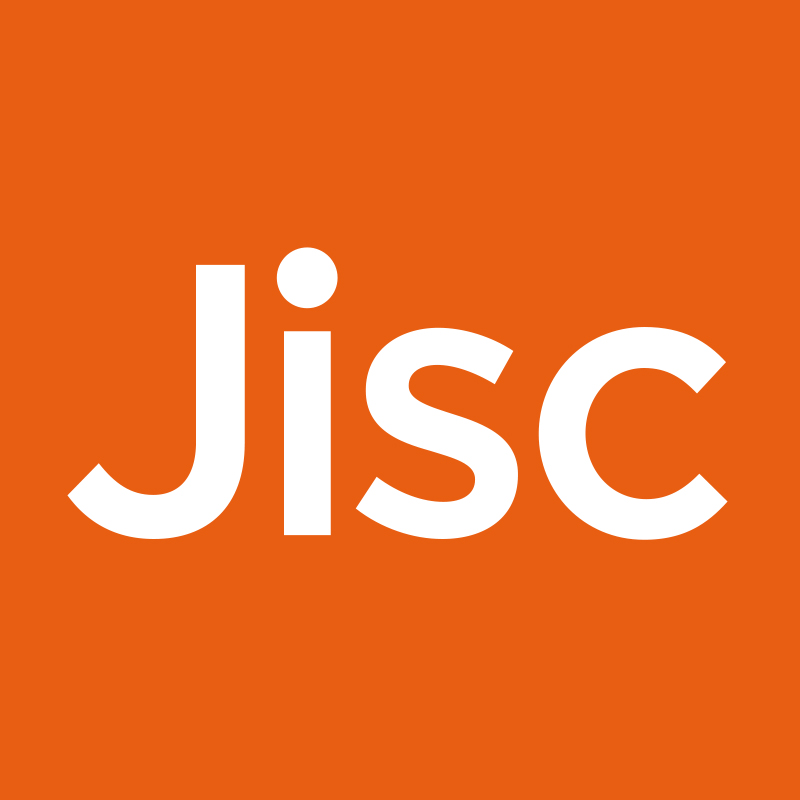Recently I’ve been presenting our suggested legal framework for learning analytics to audiences involved in teaching, rather than legal people. For that I’ve been trying out a different visualisation, which considers the teaching process as involving three layers:

- Teaching itself (red): during which we process the personal data that’s needed to help students learn. The legal model considers that to be a contracted (whether formally or informally) service that should deliver benefits to each learner.
- Improving the teaching process (orange): during which we process data (including personal data) about how students learn. This should be done in ways that minimise the impact on individual students – the aim is to improve teaching for everyone. Legally, this is a legitimate interest of the institution, which must be balanced against the risk to the rights and freedoms of students and teachers.
- Students voluntarily improving their own learning (gold). This may involve students donating additional data (how much I studied last week, etc.); and/or students following personalised guidance derived from the teaching improvement stage about (e.g. trying different learning styles, classes, etc.). In both cases it’s up to the student whether or not to participate: the institution should try to ensure the minimum detriment to those who don’t. Legally, each donation of data or adoption of a personalised suggestion is done on the basis of free, informed, consent, so students not only get to choose whether or not to participate, they get to choose which activities to participate in.
In terms of the legal framework, layer 2 covers “collection”, “analysis” and “improvement”. Layer 3 is “donation” and “intervention”. To support the blog post and paper explaining how those work, we’ve written a FAQ explaining our thinking on issues that often come up.
